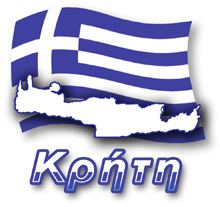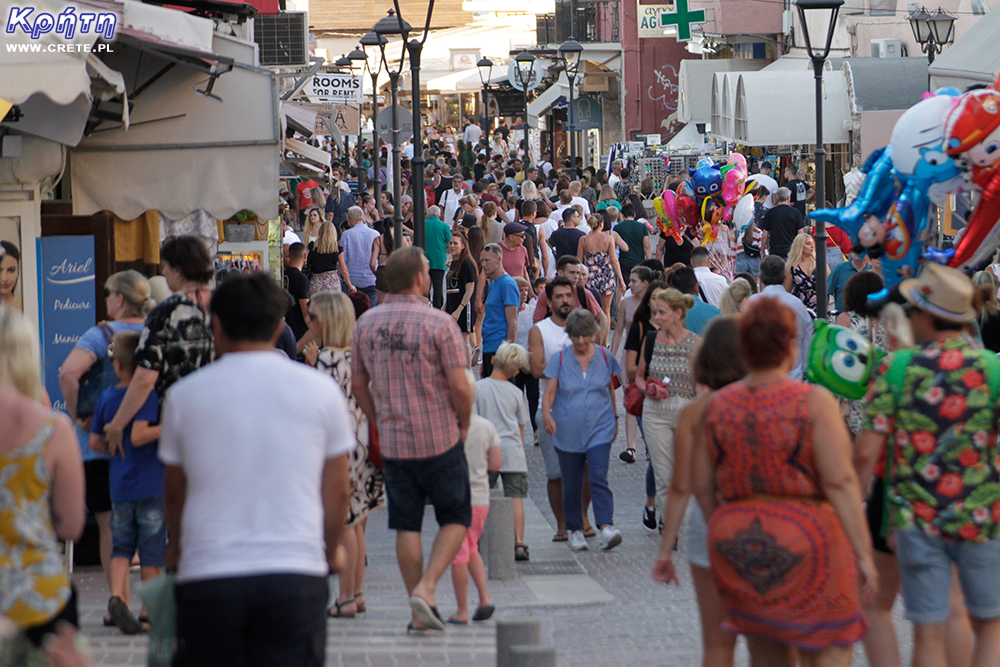
 2025-01-29 20:02:16
2025-01-29 20:02:16
The tourism industry in Greece is one of the most important elements of the economy today. It contributes decisively to the prosperity of not only those areas that are directly related to the service of tourist traffic but also to the capacity building and development of other sectors.
This is particularly the case in the Aegean and Ionian islands, but also in Crete. In these areas, the tourism industry is the main activity contributing to the development of local communities, while agricultural and artisanal-industrial activities are limited. The development of tourism in these places in recent decades has contributed to the creation of new jobs, increased wealth, but has also encouraged many residents to remain in their homeland, preventing their migration in search of work.
 Crete is one of the most important areas for Greek tourism.
Crete is one of the most important areas for Greek tourism.
The development of tourism in Crete in recent decades has been very rapid, which is regularly emphasized by people who have been visiting the island regularly for at least two decades. Visible and more tangible indicators of these changes are the constantly growing accommodation base, not only in the form of countless hotels in the north of the island and the increasingly wide range of options on the southern coast, but also the dynamically developing short-term rental market. The development of infrastructure and the improvement of the quality of roads are also visible.
Currently, tourism on the island is flourishing and generates more jobs than even agriculture can offer. According to INSETE data, in 2023 Crete generated 21% of Greece's tourism revenues, which gave it second place in the list, which included 13 regions of the country.
However, it should be noted that the number of tourists visiting Crete today during the year is now almost ten times greater than the number of permanent residents. However, the large number of guests visiting the island today means that in many places the capacity of the island's natural ecosystems is exceeded. Unfortunately, in the long term, this phenomenon causes gradual degradation of the natural environment.
Excessive concentration of tourists in popular places is called hypertourism. This term covers the second bottom of rapidly developing tourism. This phenomenon leads to the emergence of many, often trivialized and ignored economic, social and environmental problems.
Hypertourism is a serious problem in some European cities such as Venice, Barcelona, Amsterdam, etc. In Crete, it occurs mainly in the summer months in the most popular and well-known places. Excessive numbers of guests, in addition to disturbing the balance of ecosystems, also cause discomfort to permanent residents who feel alienated in their own place. An extreme example is the attempt to take over beaches by companies renting sunbeds, which in some places makes it impossible to spread your own towel on the beach. The guests themselves are also unhappy with the overcrowding, because it becomes difficult to relax in the crowd.
In Crete, the density and intensity of tourist traffic in the season are high, but there is an obvious excessive concentration of tourists in city centres, near monuments and in places of particular natural beauty during the summer.
 Chania is one of the places where hypertourism takes place seasonally
Chania is one of the places where hypertourism takes place seasonally
Some argue that overtourism is not a real problem per se, but merely a failure in managing the flow of tourists to destinations. They argue that better management of tourist flows to popular tourist destinations can mitigate overtourism and its negative effects. Unfortunately, to date, cities such as Venice, Rome, Barcelona, etc. have not developed effective policies to mitigate this problem.
In the case of Crete, an idea to reduce the phenomenon of hypertourism could be:
These solutions are intended to help distribute tourists in various places on Crete, not just on its coast.
Paradoxically, the climate crisis may help to reduce the problem of overtourism. Climate change is currently having a negative impact on all countries. However, it should be noted that these changes are occurring much faster in the Mediterranean region than in other regions of the world. The mild Mediterranean climate of Crete has been an important asset in attracting tourists. The adverse changes that have been observed especially in the last 2-3 years are starting to reduce the attractiveness of Crete as a tourist destination.

The increase in temperatures observed throughout the year, increasingly longer and more severe heat waves in the summer, the ongoing drought, increasingly frequent fires and the occurrence of extreme weather phenomena are starting to discourage some people from planning a vacation on the island. Last year, some tourists declared that they would choose a destination other than Crete (or Greece in general) for their vacation, and the direct reasons for this change in preferences were given as fears of too high temperatures, which would ruin some plans or make them feel worse.
 2025-01-29 20:02:16
2025-01-29 20:02:16
Komentarze
komentarz z
Bo Kreta jest po prostu piękna i trzeba ją zwiedzać. Jak jadę gdzieś indziej mam wyrzuty że nie na Kręte
komentarz z
Mirek Jarek coś o tym wiem
komentarz z
Mirek Jarek Pozytywne uzależnienie
A my jeździliśmy od 2008 roku wielokrotnie, kiedyś obliczyłem że spędziliśmy tam ponad pół roku ale od 2021 roku przestaliśmy - za dużo ludzi na zbyt małej przestrzeni, w miejscach gdzie przed 2015 rokiem pojawiali się ludzie raz dziennie ciągle ktoś był, nawet wysoko w górach było tyle ludzi że nie dało by się z każdym pogadać jak kiedyś - bo by się nigdzie nie doszło. Ale w tym roku planujemy powrót - tylko że na okres od listopada do marca ( wrzesień, październik, kwiecień i maj chcemy zwiedzać inne wyspy, jeszcze mniej oblężone przez tłumy). Zobaczymy co nam z tego wyjdzie. A na czerwiec, lipiec i sierpień wrócimy do domu, bo w tym okresie jest po pierwsze za gorąco a po drugie trudno znaleźć względnie spokojne miejsce.
komentarz z
A można gdzie indziej? Ja id lat tylko Kreta i wciąż mało, a ile jeszcze Kretenskich cudow do odkrycia
Można. Polecam zwłaszcza wyspy Egejskie Północne ( Samotrakę, Ikarię, Samos, Chios czy mniej oblężone Cyklady jak Kimolos, Serifos czy Sifnos.
kilka kwestii
„Widocznymi i bardziej wymiernymi wyznacznikami tych zmian jest stale powiększająca się baza noclegowa nie tylko w postaci niezliczonych hoteli na północy wyspy i coraz szerszej ofercie południowego wybrzeża”
Ale Grecję cenię za to, że nie ma takiego przegięcia jak w Hiszpanii (50-piętrowy hotel w Benidorm mówi wszystko), ani takiego niedorozwoju (uzasadnione słowo, należy im się) jak we włoskiej Kalabrii.
„Widoczny jest także rozwój infrastruktury, czy polepszania jakości dróg”
Fakt. W Polsce (np. Sudety) mamy mniejsze góry, a nie umieją sobie poradzić z drogami. Rozwój infrastruktury też na plus. Komunikacja autobusowa nie jest aż taka niepunktualna. W Hiszpanii niby lepiej, a też się zdarzają wpadki, a już Włochy to porażka.
„ (…) wydłużenie sezonu turystycznego do dwunastu miesięcy jest planem” –
No faktycznie klimat się zmienia. Przy czym zima na wyspach greckich niestety jest bardziej pochmurna i deszczowa niż na Cyprze, w Andaluzji czy Algarve. Ale na Sycylii, Malcie czy Riwierze Tureckiej podróże zimą są coraz popularniejsze.
„Wzrost temperatur obserwowany w ciągu całego roku, coraz dłuższe i doskwierające fale upałów latem”
Fakt, pierwszy raz w 2024 r. na Krecie czułem się jak w Turcji czy na Cyprze. Bądź inaczej jeszcze – w Chanii/Kato Daratso – czułem się tak jak po przybyciu z Rodos do Marmaris czy z Kos do Bodrum.
Z waszych komentarzy:
„Bo Kreta jest po prostu piękna i trzeba ją zwiedzać. Jak jadę gdzieś indziej mam wyrzuty że nie na Krete”
Ja jednak zmieniam kierunki. Również np. Włochy, Hiszpania, kraje arabskie.
Wypełnij poniższy formularz aby dodać komentarz
lub kliknij w poniższy link aby skorzystać z możliwosci komentowania przez facebooka:
https://www.facebook.com/crete.poland/posts/1015330793974518